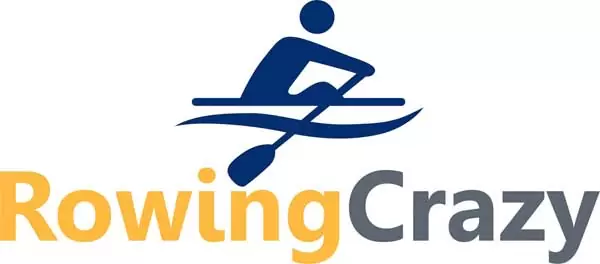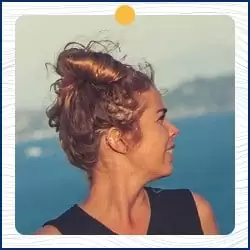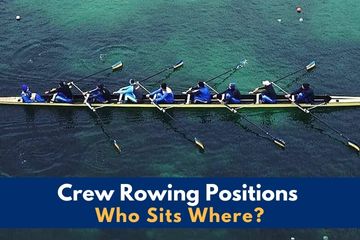
Hi friends! My name is Petra, and if you’re interested in rowing then you’ve come to the right place.
We do so much more than just sell indoor rowing machines. Every member of our team actually rows! It’s our passion, and we love to share it with our readers!
If you’re new to on-the-water rowing, there might be a few terms you aren’t familiar with, and you might have a few questions.
Not a problem! The team here at RowingCrazy is more than happy to guide you along.
Today’s question is about the positions in the rowing boat. You might wonder if they actually have numbers or names, and are they all equally important?
Let’s talk about those rowing crew positions and their respective roles and importance.
What Are the Positions in a Rowing Team?
Let’s talk about the largest row boat, Coxed 8, and use it to illustrate the crew positions in rowing.
Coxed 8 refers to sweep rowing, rather than sculling boats, and there are 8 people in the boat, each holding only one oar with both hands. Coxed means that there is a coxswain on board to navigate the boat and give directions to the crew.
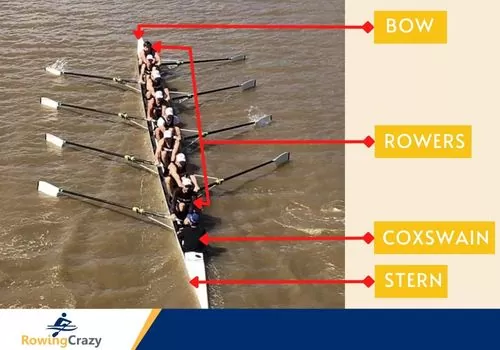
Bow Vs Stern
First off, if you are really new to all things nautical, let me remind you that the bow of the boat is considered the front and the stern is the back of the boat.
Now when speaking of rowing, the bow is the part that crosses the finish line first, but the rowers themselves won’t see that since they are facing the stern!
If you’d like to learn a bit more terminology, you’ll find this article very helpful.
Back to our Coxed 8 rowing boat.
Rowers #1, #2, #3, #4, #5, #6, #7, and #8
The bow (front) starts the seat numbers, with the seat closest to the bow labeled as #1.
The numbering system continues to the stern with the last seat in the boat being number 8, other than the coxswain who sits on the rearmost part of the boat.
Traditionally, the boat has alternate rowers on the port and starboard so that the boat moves in a straight line.
Oh, and don’t forget that the coxswain (pronounced cox-in) doesn’t have a seat number.
Are the Rowing Crew Positions Considered Equal?
Of course, every single person on the crew is important, and each pair has its own job to do.
If someone were to slack off, it affects everyone on board, so no slackers are allowed!
While it seems as if all crew members have a favorite position and a favorite mate, it is the job of the coaches to determine who is strongest and most effective in which position.
What Does Each Seat Mean in Rowing?
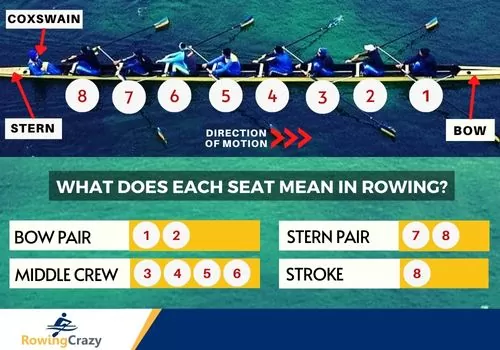
Is each rower seat just a number?
No, there are names for each pair of seats. When speaking of eight rowers (the Coxed 8, remember?), you will hear them called:
- Stroke (#8). This is the last rower at the stern and closest to the coxswain, so take note that in a Four, the Stroke is #4. Coaches often place the most competitive rower in this seat since everyone else will match the last rower’s stroke rate. The Stroke is also in the best position to communicate with the coxswain and give feedback. If the coach puts you in this position, you are probably the best and most reliable crew member since it will be your task to set the team’s rhythm and stroke rate—the reason why this rower seat is called the Stroke.
- Stern Pair. Seat number Seven (#7) and Stroke are referred as the Stern Pair. Seven sees the back of the Stroke and has the job of emulating the stroke so others can follow. If the Stroke changes rhythm, Seven needs to match it immediately so the rest of the crew can do likewise. If there is a problem from the rest of the crew, #7 relays the info to the Stroke who can then tell the coxswain.
- Middle Crew aka The Engine Room. The Middle Crew are those in the center of the boat. In a Coxed 8, the Middle Crew will be rowers #3, #4, #5, and #6, while in a Four, they will be rowers #2 and #3. These are often the heaviest and the most powerful rowers. They get nicknames like the Fuel Tank, the Meat Wagon, the Engine Room, or the Powerhouse. These names are well deserved since their job isn’t to steer the boat or decide on the stroke rate, their only job is to row as hard as possible.
- Bow Pair. The rower closest to the bow is called the Bowman or just Bow. In an Eight, #1 and #2 are called the Bow Pair. They are often the smallest members of the crew (other than the coxswain), so that the cox can see what’s ahead. If this was a coxless boat, it is the bow or the bow pair that will be giving directions to the crew and shouting out encouragement. In a Coxed 8, the pair is responsible for the stability of the boat. They are often the most technical, with the ability to be flexible and to move at a moment’s notice.
It’s fairly easy to remember who is who once you know the bow from the stern!
Who Decides What the Stroke Rate Is? The Stroke or the Coxswain?
This is a very good question, and the answer is one of the more interesting aspects of rowing.
The answer is both the Stroke and the Coxswain. Let me tell you how this works.
It is vital that the Stroke and the Coxswain get along. Nothing screams “loser” louder than a crew whose Cox and Stroke are at odds with one another.
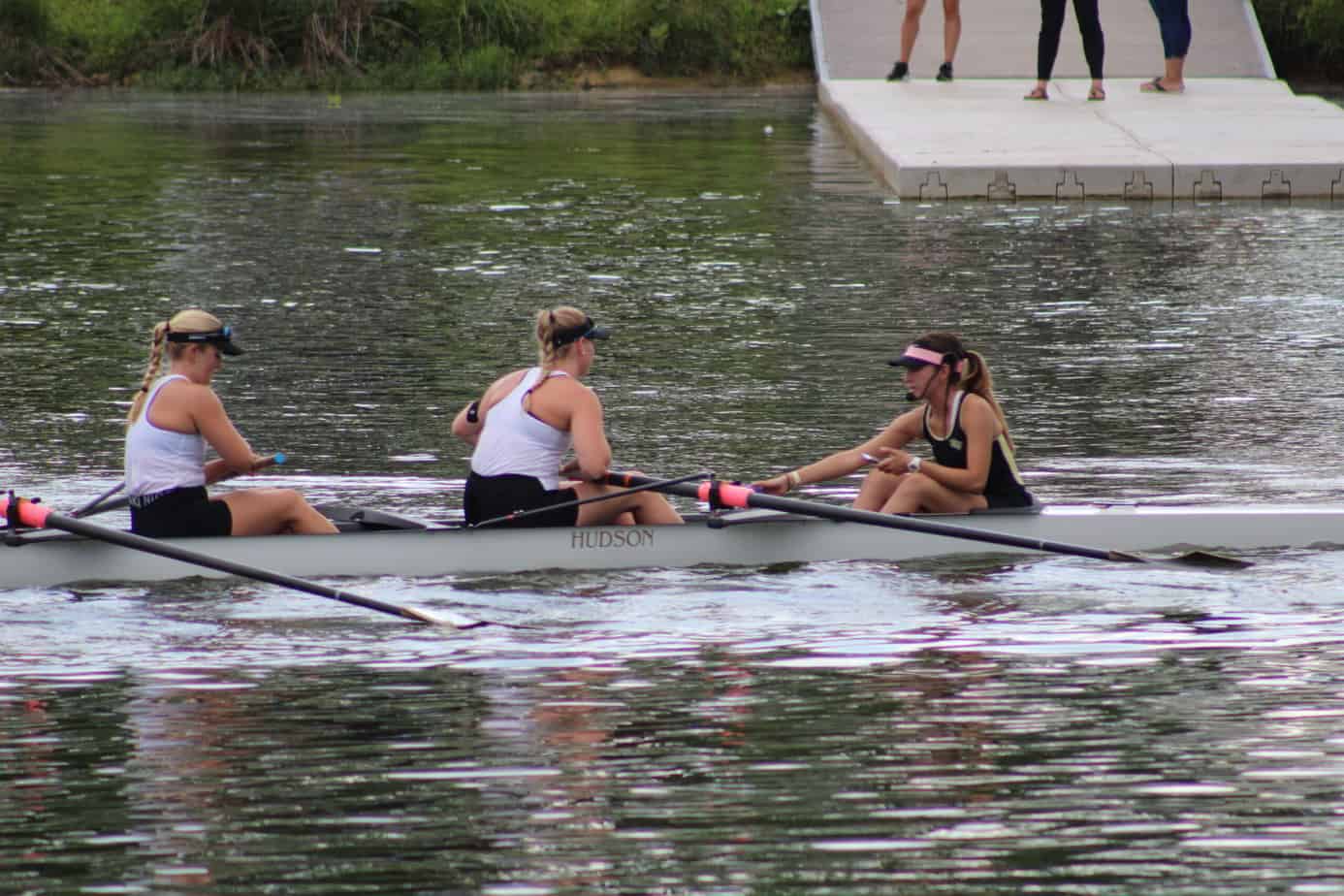
This pair must work together for the good of the crew.
Similar to the way that a catcher and a pitcher in baseball will agree beforehand that certain gestures will mean that a pitch will be thrown one way or another, the Cox and the Stroke want to avoid having other boats hear or see what their race plan is. The pair will decide on some very subtle “signs”, hand signals, head nods, etc., to determine what strokes will be used and their overall strategy, and this should be a huge asset when it comes to winning.
Now I would be lying if I said that a Stroke would never ignore the sign given by the Coxswain, but this is pretty rare.
Some Strokes think that the Coxswain steers the boat while they direct the crew, but this shouldn’t be true.
Yes, the other crew members will do the Stroke’s bidding, believing that it came from the Cox, but crews work best in teams, and there is no “I” in the word team.
In the majority of cases, the Stroke and the Cox work in tandem to the benefit of the rest of the crew.
If the Stroke should ignore the signs of the Coxswain, I can tell you that they better have a good reason, and there will be, shall we say “loud words” in the clubhouse later on.
The Bottom Line on Crew Team Positions
While everyone may have their own favorite boat position, the fact remains that it’s the decision of the coach where a rower ultimately ends up.
Not everyone can be the Stroke, and not everyone is suited to be in the bow seat. A smooth and fluid technique can be achieved when coaches know every rower’s strengths and weaknesses and use this to the team’s advantage.
I hope this article provided you with a better understanding of the rowing positions and the responsibilities of the crew.
Happy rowing to a healthy, active life!
Frequently Asked Questions
1. Which seat is the stroke seat in rowing?
In an Eight boat, the stroke is seat number 8, the last rower at the stern facing the coxswain. In a Four sweep rowing boat, the stroke is seat number 4.
2. What does your rowing seat say about you?
Here’s what your rowing seat says about you. If you’re a stroke or one of the stern pair, it means that you’re the most competitive and most decisive. Your coach must find you very reliable. If you’re in the middle crew, it means that you’re one of the heaviest and most powerful rowers in the team. If you’re the bow or one of the bow pair, you must be the smallest, lightest, and most agile in your crew. More importantly, your coach trusts your ability to keep the boat balanced and stable.
Written by Petra Amara – RowingCrazy.com
CEO & Founder of RowingCrazy, National Rower, Coxswain Womens Eight Team, Rowing Coach & Writer
Petra is a Mother of two and owner of Rowingcrazy.com. Petra lives and breathes rowing, she also has a passion for writing which lead her to start RowingCrazy.com to share her rowing experience and expertise with others.



